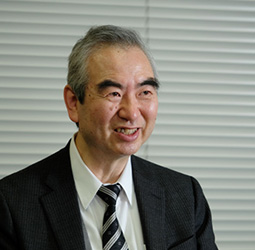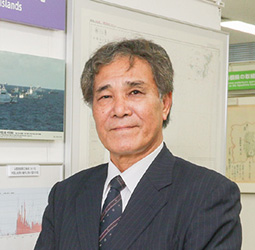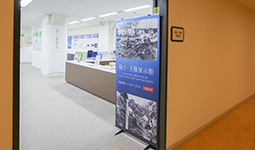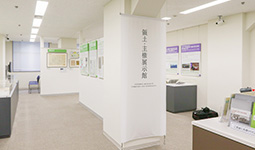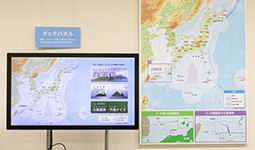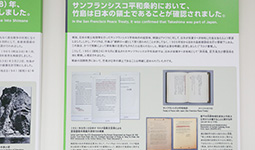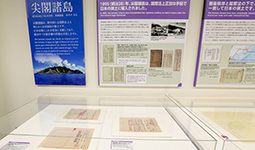Home > Highlighting JAPAN > Highlighting Japan April 2018 > The Maritime Nation of Japan
Highlighting JAPAN
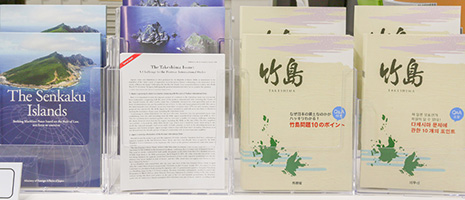
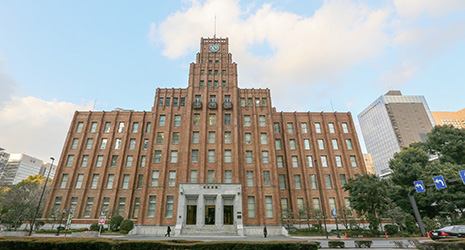
Takeshima and the Senkaku Islands
On January 25, 2018, the National Museum of Territory and Sovereignty opened in a corner of Hibiya Park, Tokyo. The museum displays documents and materials related to Takeshima and the Senkaku Islands.
The National Museum of Territory and Sovereignty is the first permanent facility of its kind set up by the Government, and visitors can see various documents and materials which indicate the fact that Takeshima, part of Okinoshima-Town in Shimane Prefecture, and the Senkaku Islands, part of Ishigaki City in Okinawa Prefecture, are inherent territory of Japan. While the tension over the Japanese territory has been increasing, the Museum is positioned as a hub to diffuse accurate understanding concerning the territory and sovereignty of Japan across the world.
Here we share some remarks from experts regarding Takeshima and the Senkaku Islands.
Takashi Tsukamoto, Professor, Department of Law, Tokai University
In the 17th century, townsmen from present-day Yonago City in Tottori Prefecture engaged in fishing and hunting at Utsuryo Island in the Sea of Japan and Takeshima, which was on the way to Utsuryo Island, under the approval of the Government (the Edo shogunate). While the shogunate banned passage to Utsuryo Island in the 1690s as a result of negotiations between Japan and Korea over abalone fishing on the island, no such ban was issued for Takeshima.
Due to an emerging need to regulate sea lion hunting in the early 20th century, in 1905 the Government incorporated Takeshima into Shimane Prefecture. The Government registered Takeshima as a state land, and revised and applied fisheries regulations, thus, exercised its sovereignty over Takeshima peacefully and continuously. In this way, Japan authenticated the sovereignty over Takeshima in accordance with the modern international law.
After the Second World War, Korea demanded the United States, which was preparing the draft of the Treaty of Peace with Japan, to designate Takeshima as Korean territory. The United States, however, denied the Korean territory (in July 1951) by the reason that Takeshima was never treated as part of Korea and the island had been under the jurisdiction of Shimane Prefecture since about 1905. As a result, in the San Francisco Peace Treaty (signed in September 1951), Takeshima was affirmed as a territory of Japan. However, on January 18, 1952, just before the treaty took effect, Korea unilaterally drew a line in the high sea, in contravention of international law, and encompassed Takeshima. On January 28, 1952, Japan launched a protest against Korea. Although Korea continued to accumulate fait accompli such as stationing armed personnel on Takeshima (starting in 1954) and a construction of a lighthouse, all of these Korean actions were taken after the generation of this dispute. Therefore, they do not constitute a basis of the territorial claims.
Japan has proposed to refer this case to the International Court of Justice three times, but Korea has rejected all of the proposals. The dispute should be resolved not by force, but on the basis of law. It is an exemplification of mature international society.
Kurayoshi Takara, Emeritus Professor, University of the Ryukyus
It is important to understand the Senkaku Islands based on history.
From the birth of the Ryukyu Kingdom in 1372 to abolishment of its sakuho (tributary) relationship with the Qing Dynasty in 1876, the Ryukyu Kingdom engaged in so-called tributary trade with China’s Ming and Qing Dynasties. Making twice-yearly return trips to Fuzhou, China, Ryukyuans were familiar with the Senkaku Islands which laid on the sea route between Ryukyu and Fuzhou. However, the Ryukyu Kingdom’s administration did not extend to the Senkaku Islands. This is because, while the Ryukyu Kingdom at the time governed over remote islands through the Shuri royal government, the Senkaku Islands were uninhabited and there was no need to extend administrative acts there. Needless to say, the Senkaku Islands were not controlled by any other nations.
In 1885, Okinawa Prefecture dispatched survey teams to the Daito Islands and Senkaku Islands for the purpose of developing uninhabited islands, and, at first, placed the Daito Islands under the jurisdiction of Okinawa Prefecture. After careful survey on the Senkaku Islands, the Government placed them under the jurisdiction of Okinawa Prefecture 10 years later on January 14, 1895. In 1900, pioneers from Hachijojima Island moved to the Daito Islands and started development mainly by the cultivation of sugar cane, then they settled down in the islands. In 1896, the development of the Senkaku Islands was started by Tatsushiro Koga, a businessperson from Fukuoka Prefecture, mainly by the fishing industry.
It is important also for the context of international law to conduct working for finding out the three-dimensional facts by these kind of historical reasons and the accumulated facts. The National Museum of Territory and Sovereignty is a key facility to take the role of displaying the results of the research of documents. The facility will be the place of highlighting the importance of “fact-based knowledge” and “objective discussion.” It is important to share Japan’s position and grounds for argument with the Japanese people as well as the international community in this way.
© 2009 Cabinet Office, Government of Japan
